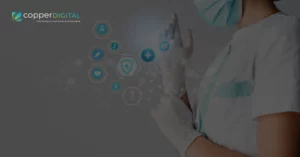The Healthcare industry is changing. As almost every industry adapts a user-focused approach, the healthcare industry moves towards a patient-focused approach due to digital transformation. With benefits such as streamlining operations, understanding the patient’s need, building loyalty by offering a better user experience are some of a few advantages that digital transformation can bring in healthcare.
Digital transformation plays a vital role in delighting existing customers and targeting new ones by understanding their needs and behavior patterns.
According to the report, the Global mHealth Market rose at 29.1% CAGR and reached $293.29 billion by 2026. The report analyzes the market for mHealth by Category (By Apps {Disease & Treatment Management, Wellness Management}, By Wearable {Body & Temperature Monitors, Glucose Monitors}) By Services Type (Monitoring Services, Diagnostic Services, Treatment Services) By Service Provider (mHealth App Companies, Hospitals, Health Insurance) and Regional Forecast, 2019-2026.
The rising uptake of mHealth services among the elderly population is a significant factor driving the global market. The demand for easy access to health information among the geriatric population is a crucial factor impelling mHealth services innovations, as per the report. According to another report, given below is the Mobile health apps market forecast in the United States from 2018 to 2025, by type.
Healthcare app provides its customers with lots of facilities like they could quickly get appointments fixed with the desired doctor. They could interact with the doctors and check the medical reports’ availability in a brief period.
They could also purchase medicines online. The doctors of the relevant patients could check the patient’s reports and suggest treatments if required on a quick and emergency note.
Healthcare applications are a boon for customers as well. With facilities like fixing the appointment from the comfort of their home, interacting and consulting with doctors, purchasing medicine online are just a few of many benefits that digital transformation provides them, and it’s just a start!
As healthcare providers, we understand that adapting and embracing mobilization could be an overwhelming experience for you, given the technology choices, making changes in a set but outdated business processes. Thus, in this article, we’ll be covering topics that you need to know before getting started. Let us begin with some of the significant benefits that mobile applications can bring to you and your customers.
Patient Care at Home
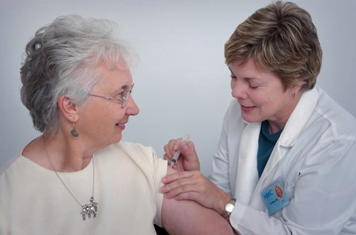
Mobile applications bring medical care to the home and become a blessing for patients, doctors, nurses, and even the medical vendor. These apps can update doctors about the patients’ symptoms and health conditions to doctors and can even create a report. A recent survey by GreatCall, states that 94% of doctors considered mhealth apps responsible for improving patients’ health, while 41% believe it could reduce clinic visits. Another report suggests that most physicians (around 80%) use smartphone apps to deliver patient care. Thus, proving the importance of healthcare applications.
Benefits for Medical Staff

Mobile applications ease the communication with the patients, along with making the hospital’s operations more stabilized.
As healthcare applications keep updating the medical staff about the patients’ health conditions, it gets effortless for them to respond in an emergency, moreover, even prevent the same.
With mobile applications, appointments can be booked quickly. Even consultation can be taken from home; hence, there are far fewer patients in the hospital now, which are way easier to manage.
Benefits for Patients
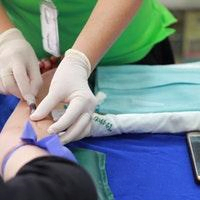
Not a long while ago, patients used to stand in long queues and go through complicated processes to get appointments with doctors or buy medicines at affordable cost, which changed entirely with mobile applications. Not just fixing appointments, patients can even receive consultancy from the doctor without even visiting the hospital with mobile applications.
Internet of Things (IoT) to the rescue
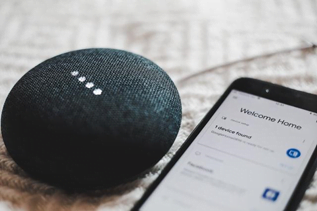
With a compound annual growth rate (CAGR) of 27.6% between 2019-24, the global IoT healthcare market is forecasted to reach $188 billion by 2024 as per recent reports. IoT devices connected with sensors like wheelchairs, wearable devices, nebulizers, oxygen pumps, etc., simplify the tasks for all healthcare professionals and patients by collecting essential data.
New Opportunities
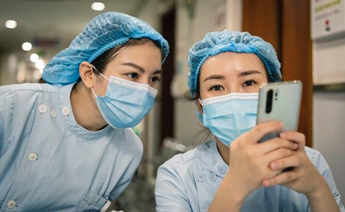
This paradigm shift towards patient-focused applications results in more awareness, creating new opportunities in the healthcare application market. According to statistics, the global mHealth solutions market with a 33.3% CAGR is expected to reach $213.6 billion by 2025. New applications such as pregnancy apps, diet-related, workout, or women health-related apps are witnessing more downloads, thus creating a different innovation route.
These are just some of the many benefits that mobile healthcare applications can provide to users and healthcare providers. However, it comes with its own sets of challenges, and it would not be recommended to have a blind eye towards those.
Therefore, we have collaborated on some of those challenges that healthcare providers should discuss with their application developers and find the right solution before getting started.
Let’s have a look:
Maintaining Data Security and Privacy

Healthcare applications deal with a lot of confidential and sensitive information about its users. Thus, taking care of data security is the most essential and challenging part while developing the application. Privacy and protection of users’ data should be ensured by setting the right security standards.
Managing Big Data
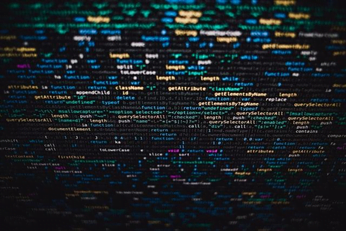
As mentioned earlier, with an increasing number of IoT based applications, healthcare providers often deal with a massive number of user data. These devices collect users’ data every minute. Thus, to manage and get useful insights from it is a challenge; it is also a significant load on the processor to receive and handle such a huge chunk of data. Hence, the necessary measures should be taken.
Setting the Perfect User experience

As stated in the article earlier, it is crucial to building your application, thus enhancing user experience. Whether it is UI or App navigation, every element must fit the user persona and needs in mind. Therefore, it is essential to do the necessary research and get your buyer’s persona right. You could read more about the patient experience stages here, decide where your user lies in the journey and set your research groundwork.
These challenges can be overcome through research and proper planning. For inspiration, you can look at some of the apps which have overcome these challenges and are now making their mark on the healthcare industry:
Unmind:
Unmind is the B2B mental health platform, targetting people who are victims of unrealistic targets and workplace bureaucracy. The application has, by far, raised £ 4.7m across three funding rounds. As stated by them, the platform empowers employees to proactively measure and manage their mental health through scientifically-backed assessments, tools, training and signposting. They also provided the organizations with insight into their employees’ mental health, allowing them to effectively frame and improve their mental health strategy.
Sony’s mSafety Mobile Health
Sony’s mSafety allows providers of health and safety services to monitor people remotely and keep them safe. The mSafety platform consists of two main components: a wearable and a cloud backend. The wearable is directly connected to the Internet. It features in-device sensors with algorithms to monitor activity, heart rate, sleep, and stress, as well as a GPS for location tracking.
Mobile MIM Radiology App
The application enables clinicians to view images and make medical diagnoses based on computed tomography (CT), magnetic resonance imaging (MRI), and nuclear medicine technology, such as positron emission tomography (PET). The app allows clinicians to measure distance, intensity values, display measurement lines, annotations, and regions of interest. The images are securely transferred to the app from a hospital or physician’s office through a secure network transfer facilitated by MIM.
Amazing, isn’t it! You could read about more such innovative mHealth applications in our article here.
The plethora of mobile healthcare applications proves that mobile apps are gaining incredible traction in all areas of life and becoming a crucial part of the digital ecosystem in the world’s epoch, heading towards digitalization. All kinds of healthcare providers, irrespective of small, medium, or large, are becoming a part of it, given the benefits it has for everyone. Undoubtedly, this paradigm shift is here not just to stay but thrive.
Let’s have a look at what lies in the future for mHealth Applications:
Trends for Mobile application in Healthcare Industry:
Artificial Intelligence
AI is responsible for changing modern healthcare facilities; thus, it is one of the most prominent healthcare app trends. Artificial intelligence comprises all the technology that can collect data, gauge insights, and use the same to perform meaningful clinical and administrative healthcare tasks. As per the grand view research report, The global artificial intelligence in healthcare market size valued at USD 2.5 billion in 2018 and is expected to grow at a compound annual growth rate (CAGR) of 41.5% from 2019 to 2025. The growing need for lowering healthcare costs, growing importance of big data in healthcare, rising adoption of precision medicine, and declining hardware costs are some factors driving growth
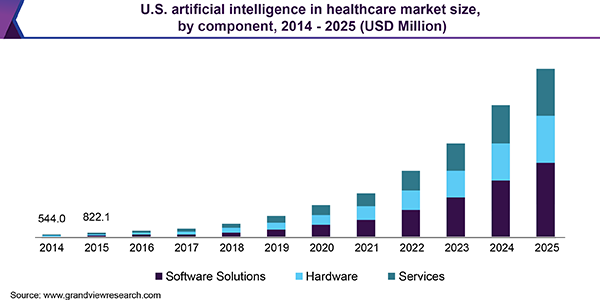
Telemedicine and Telehealth Apps

Telemedicine and Telehealth applications empower patients to have video calls with their preferred physicians from the comfort of their own home. Telehealth apps like “doctor on demand” and HealthTap are a few examples of the application responsible for making the user’s life more convenient. Thus witnessing the tremendous growth of 120% and is estimated to reach $114 billion by 2025.
Geolocation

Geolocation has become one of the main features in mHealth applications recently because of its multiple benefits. This feature allows users to locate nearby hospitals, pharmacies, etc., to make an emergency call in case of accidents or even get news and updates regarding health emergency (like the one we’re experiencing now) and much more!
These features have proved its importance in COVID 19 pandemic through apps such as TraceTogether and Aarogya Setu. You could learn more about such applications in our video here.
Internet of Things (IoT)
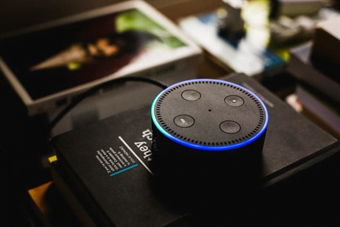
As stated above, IoT has proven to be a useful feature as it collects necessary information from the connected devices and transfer them to the healthcare service providers, saving time, effort, and cost. With its usage across the healthcare industry in wearable devices, incubators, and others, it most certainly will grow more prominent in the coming years.
Now that you’re aware of the usage, benefits, challenges, and trends of mHealth applications, and most probably thinking about building your application, we understand that your biggest dilemma now must be how to build an application – what would be that first step and how to move forward. But we have got you covered! Read our detailed article on building a Healthcare app to detail the process and methods.
As a healthcare provider, you may also want to outsource your application development to a vendor (and we recommend that you do!) given the application’s complexity and the industry experience it requires. We suggest you look for a few qualities in the vendor before finalizing them with your mhealth applications; you could find those in detail in our article here. With more than 20,000 mobile app developers, as listed on Clutch (Copper Mobile Proud to be Named a Top Development Partner in Texas by Clutch!), there are many choices. As a smart buyer, you need to be super careful while surpassing that noise and choosing the right vendor for your healthcare mobile application. Contact us today, and allow us to explain to you over a cup of coffee, why we could be the partner you’re looking for. With our expertise in mobile application development and healthcare domain knowledge, we sure can be a perfect fit for your project requirements.


